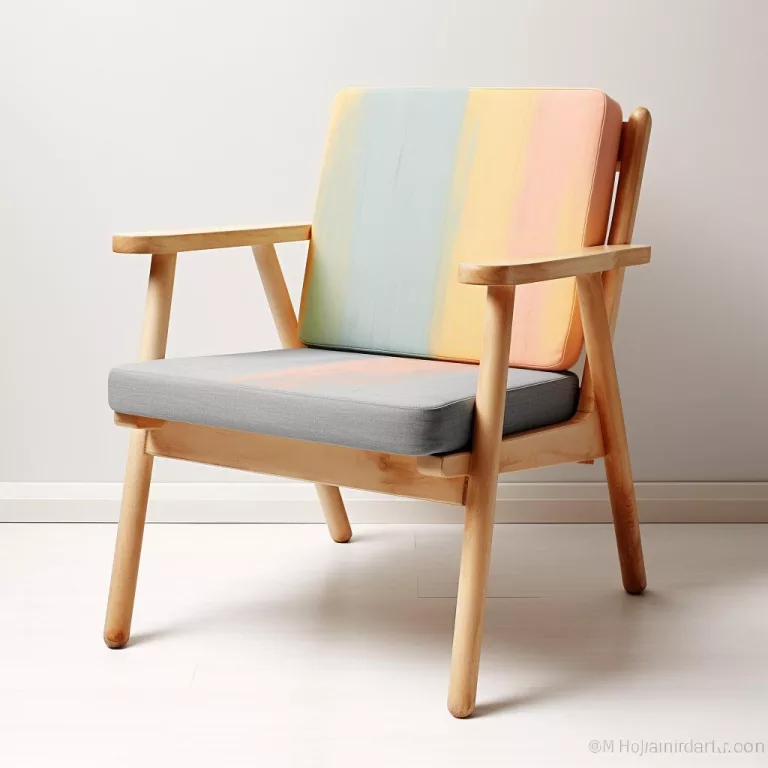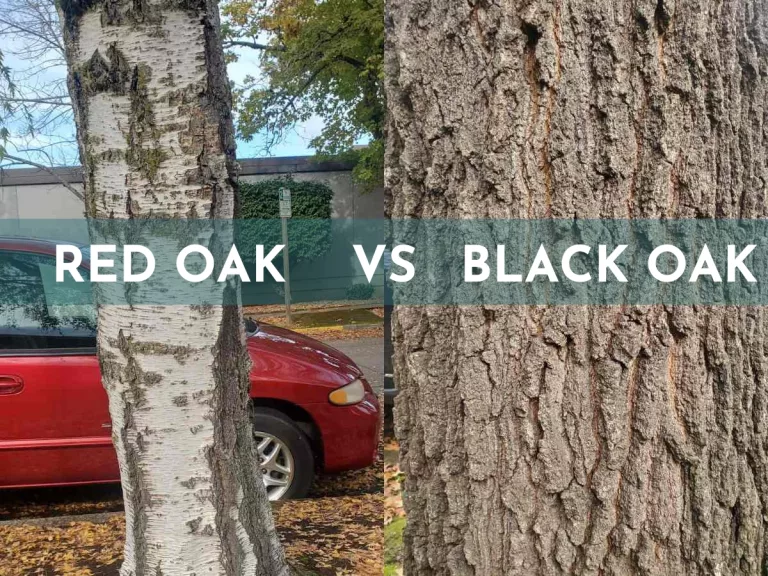Oak Wood vs Teak Wood: A Comprehensive Guide to Choosing Your Perfect Timber
Join me as we dive into the enchanting world of ‘Oak Wood vs Teak Wood,’ where I’ll guide you through the unique characteristics and uses of these two beloved woods in craftsmanship and design. As we explore together, I’ll share insights on how each wood can beautifully transform your projects and spaces. Whether you’re a passionate woodworker, a design aficionado, or just starting your journey, I’m excited to help you discover the distinct charm, resilience, and elegance that oak and teak bring to the table.
Differences
Scientific Names and Species Count
| Aspect | Oak | Teak |
|---|---|---|
| Scientific Name | Genus Quercus | Tectona grandis |
| Species Count | Over 400 species, including Quercus robur, Quercus alba, Quercus rubra | Primarily one major species, with a few others in the Tectona genus |
In my woodworking experience, oak’s diversity across its species like Quercus robur and Quercus alba offers versatility in grain and texture, ideal for a range of projects. Teak, mainly Tectona grandis, is consistent and durable, perfect for outdoor projects.
Let me walk you through more areas of differences.
Physical Differences
| Aspect | Oak | Teak |
|---|---|---|
| Color | Light to medium brown, reddish hue in red oaks | Golden to medium brown, darkens with age |
| Grain and Texture | Straight grain, coarse texture, more uniform in white oak | Straight grain, can be wavy/interlocked, coarse texture |
| Density and Hardness | Hard and strong, great wear resistance | Hard and dense, durable |
| Weight | Varies, generally heavy | Generally heavy |
Botanical Differences
| Aspect | Oak | Teak |
|---|---|---|
| Leaf | Lobed, varying shapes, deciduous/evergreen | Large, opposite, simple leaves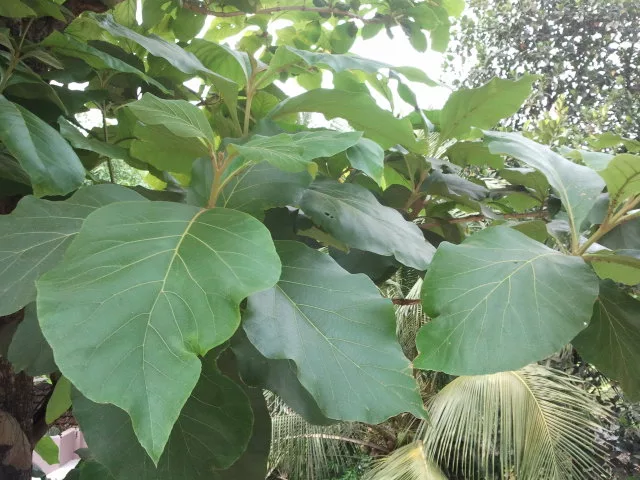 Image source: wikipedia.org, Photo credit: Amrith Raj |
| Fruit | Acorns, nuts with a hard shell and cap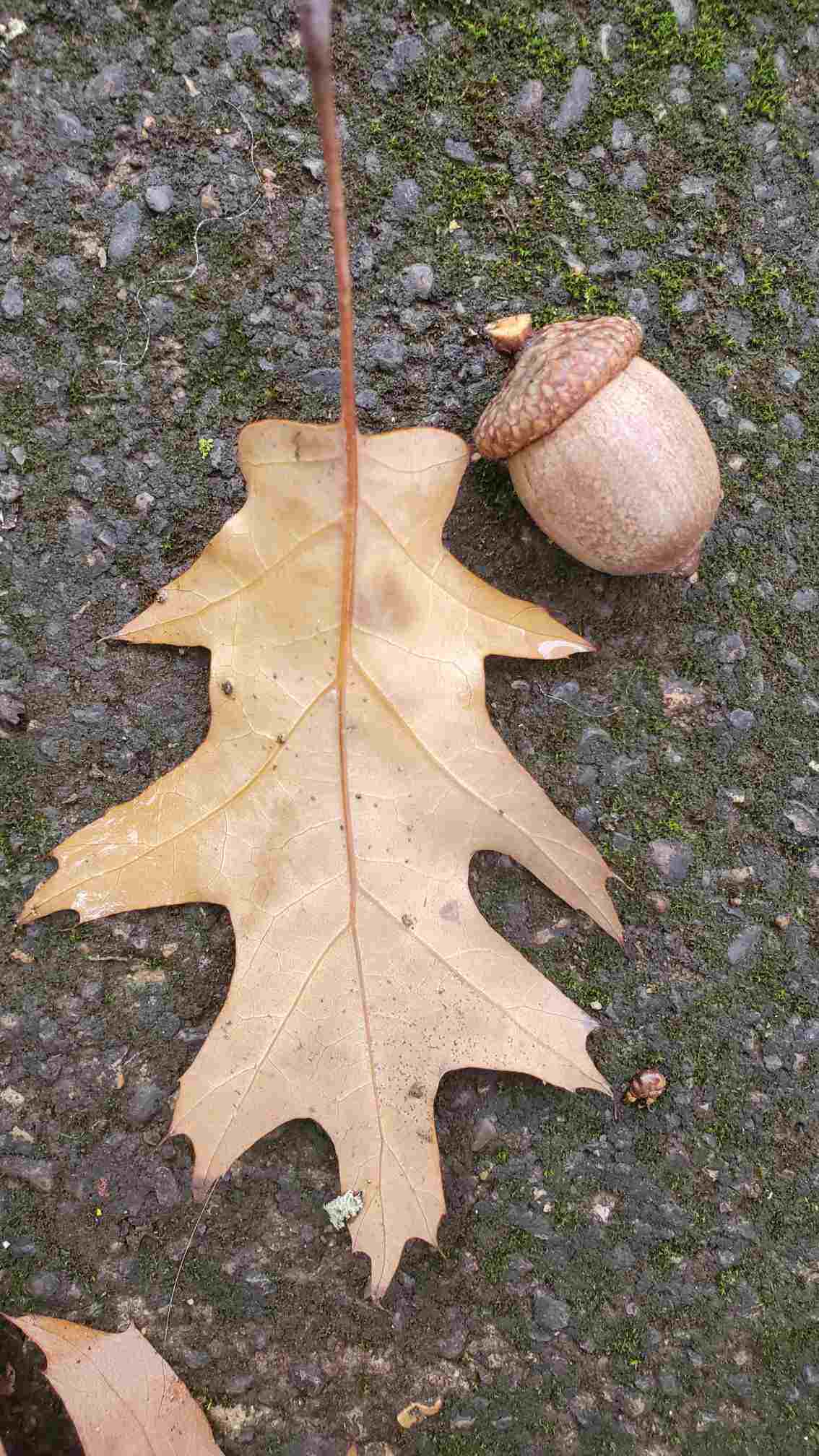 | Small, papery fruits with seeds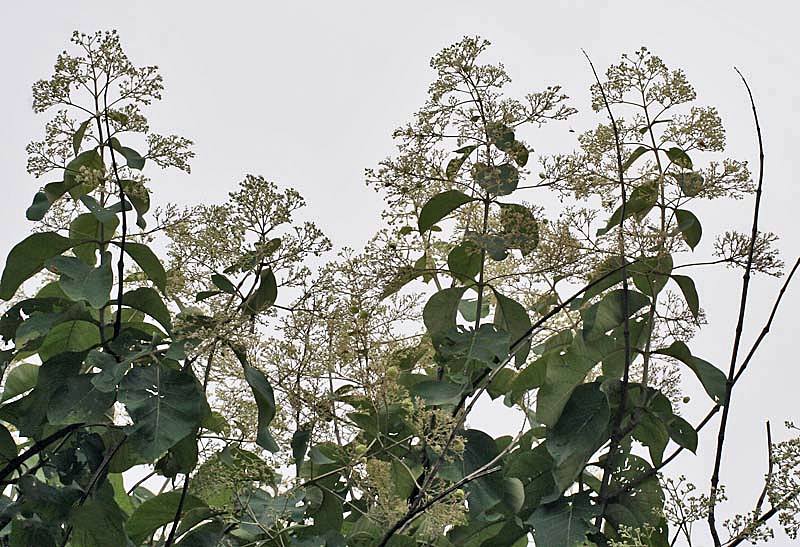 Image source: wikipedia.org, Photo credit: I, J.M.Garg |
| Wood Characteristics | Contains tannin content, resistant to insects/fungi | Contains natural oils, resistant to pests/rot |
| Bark | Varies; generally thick and rugged, with deep fissures in many species | Smooth, grayish to brown, becomes deeply fissured with age Image source: Wikimedia Commons |
| Height | Varies; typically 60-100 feet (18-30 meters), some species taller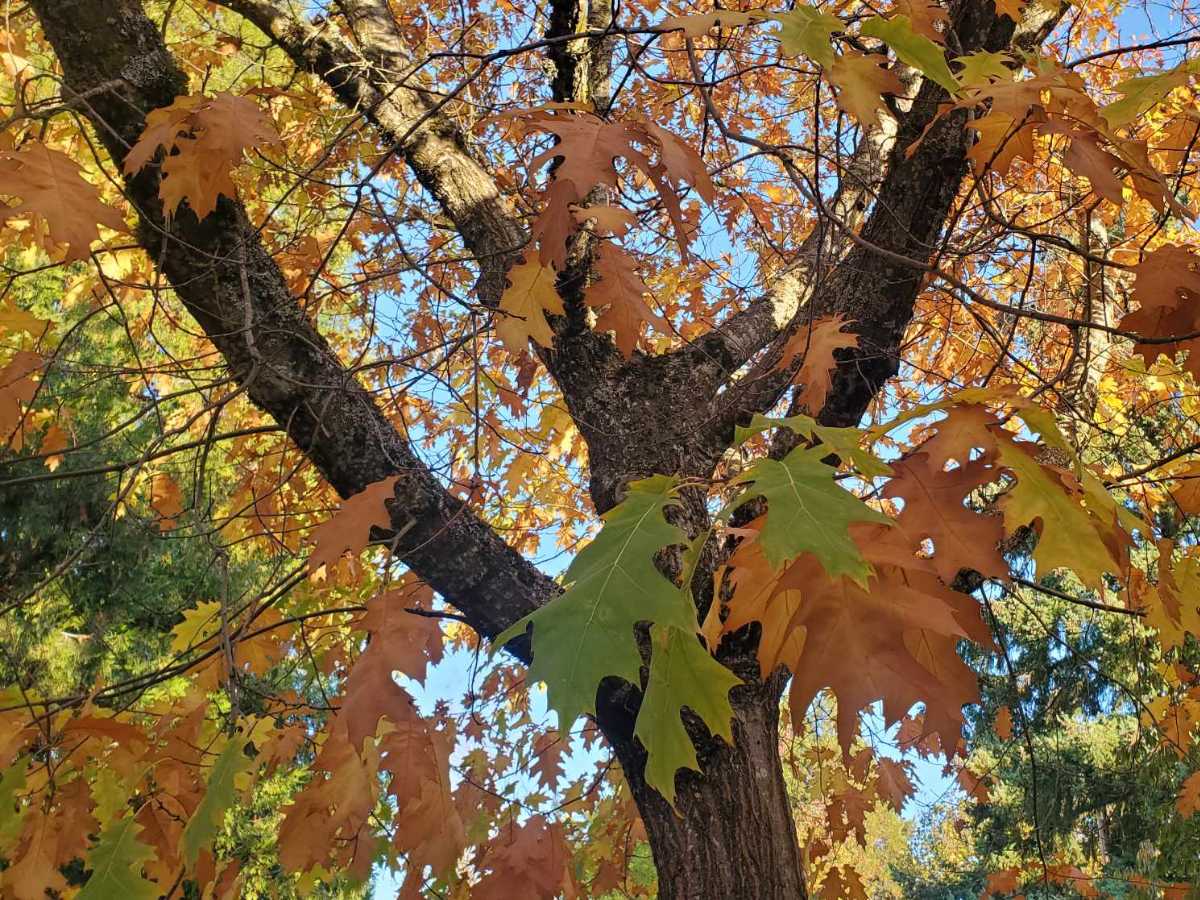 | Up to 130 feet (40 meters)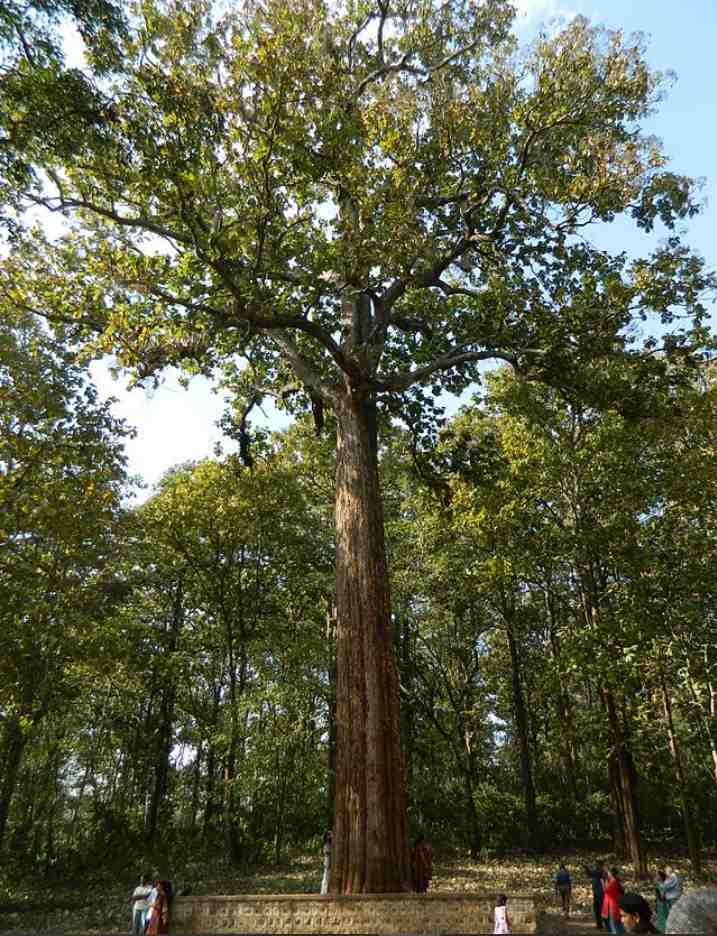 Image source: Wikimedia Commons |
Distribution Geography
| Aspect | Oak | Teak |
|---|---|---|
| Distribution Geography | Native to the Northern Hemisphere, widespread in temperate zones [spans from 23.5°N (Tropic of Cancer) to 66.5°N latitude (Arctic Circle) ] | Native to south and southeast Asia, cultivated in other tropical regions |
| Growth Habitat | Temperate regions, Northern Hemisphere | Tropical climate, south and southeast Asia |

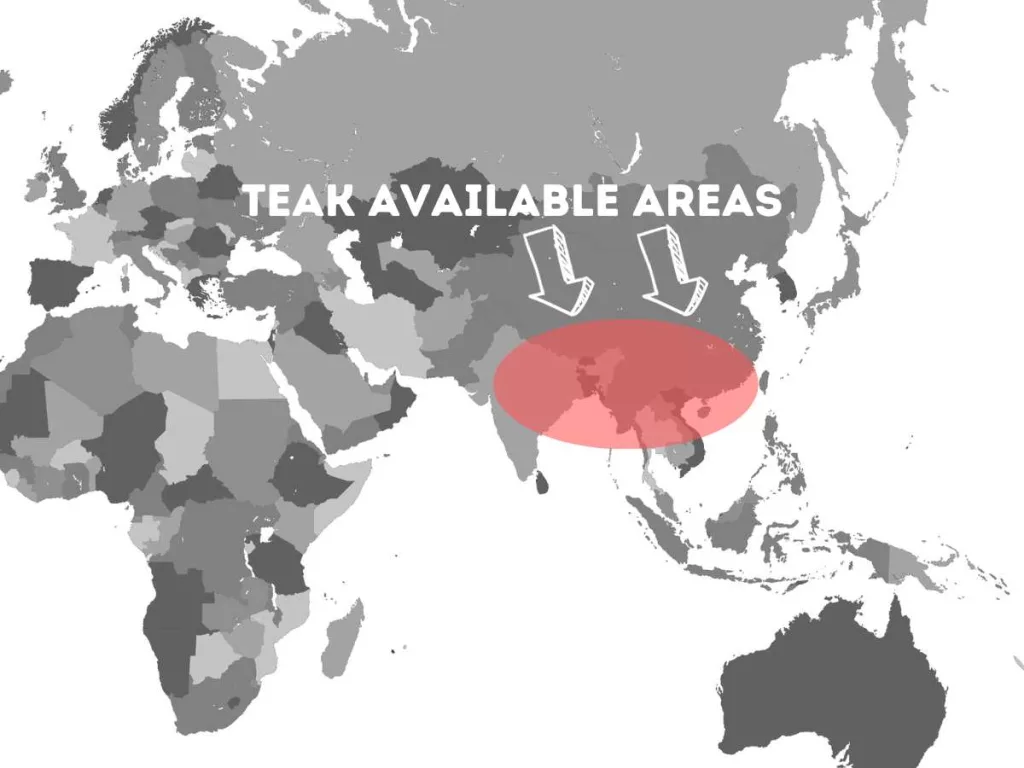
Wildlife Impacts
| Aspect | Oak | Teak |
|---|---|---|
| Wildlife Impacts | Acorns are a crucial food source for many wildlife species; bark and leaves support diverse fauna | Provides habitat and food for a variety of wildlife in its native range |
Uses and Woodworking Perspective
| Aspect | Oak | Teak |
|---|---|---|
| Weather Resistance | Good with proper treatment; white oak is more resistant to moisture and decay than red oak. Requires protective finishes for outdoor use. | Excellent; highly resistant to weathering, moisture, rot, and UV radiation. Ideal for marine environments. |
| Maintenance | Higher; needs regular sealing and finishing to protect against moisture and decay. | Low; naturally weathers to a silver-gray patina. Occasional cleaning and optional oiling to maintain color. |
| Strength and Durability | Strong, needs care for outdoor integrity. | Extremely strong, ideal for coastal environments. |
| Aesthetics | Light to medium brown, prominent grain, rustic/classic appeal. | Golden-brown to silver-gray, smooth grain, versatile design. |
| Suitable For | Outdoor Suitable, especially white oak, but requires more maintenance and care to sustain durability in outdoor settings. And you can make indoor furniture, flooring, barrels, construction items. | Highly suitable for high-end indoor and outdoor furniture, decks, and boats. |
| Cost | More affordable, widely available. | More expensive, premium quality, limited regions. |
| Woodworking Perspective | Varies by species; generally machines well, good for steam bending, finishing varies. | Easy to work despite its hardness, glues and finishes well. |
This video will make it easy for you to decide if oak is right for your project.
Or you are looking for teak actually? Check it below.
Allergenicity and Toxicity
| Aspect | Oak Wood | Teak Wood |
|---|---|---|
| Allergenicity | Can cause dermatitis and respiratory issues. | Low, but sawdust may irritate skin and lungs. |
| Toxicity | Mildly toxic if ingested in large quantities, low toxicity otherwise. | Low, but natural oils may irritate some during woodworking. |
Chemical and Physical Properties
| Aspect | Oak Wood | Teak Wood |
|---|---|---|
| Natural Oils and Compounds | High tannin content, which provides natural resistance to insects and fungal decay. | High oil content, including unique compounds like Tectoquinone, contributing to its durability and resistance to decay and pests. |
| Density and Hardness | Generally dense and hard. Janka hardness varies by species, e.g., White Oak: 1,360 lbf (6,000 N), Red Oak: 1,290 lbf (5,700 N). | Dense and hard, yet workable. Janka hardness: around 1,070 lbf (4,740 N). |
| Grain and Texture | Straight grain with a coarse texture; white oak has a more uniform texture compared to red oak. | Straight grain, though can be wavy or interlocked; coarse, uneven texture. |
Conclusion
In summary, the choice between oak and teak wood depends on usage: teak excels outdoors due to its durability and weather resistance, while oak is preferred for its aesthetic appeal indoors. Each wood has unique qualities, making them suitable for different applications.
Resources
FAQs
Is oak wood better than teak wood?
Not necessarily; it depends on the application. Teak is better for outdoor use due to its natural weather resistance, while oak is preferred for indoor furniture for its aesthetic appeal.
Is teak stronger than oak?
Both are strong, but teak generally has better weather resistance and durability, especially in outdoor environments.
What wood is better than teak?
“Better” varies by use. For outdoor durability, few woods surpass teak, but woods like Ipe or Mahogany can be comparable alternatives.
How can you tell if wood is teak?
Teak has a golden to medium brown color, a straight grain pattern, and a slightly oily or greasy feel due to its natural oils.


